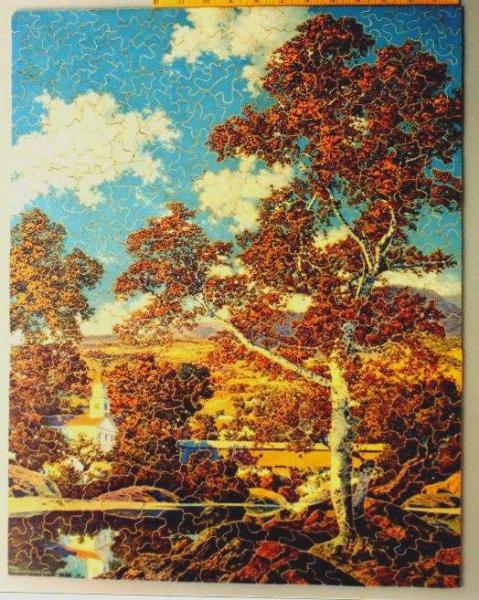
Lovely scene painted by Maxfield Parrish in late 1930's and cut into this puzzle by Isabel Ayer of Boston, MA shortly before her remarkable career as one of the leading puzzle makers in the Boston area ended in the early 1940's . Her style here is similar to puzzles cut by her 35 years earlier: push fit with extensive color line cutting and no figure pieces. But by the 1930's she was "turning" the wood more and achieving some degree of interlock. Still, I consider her part of the 1909 era of puzzle cutting. At the very top of the tree just to the right of the cloud is a gap or empty space among the leaves. Was this a cutting error by the great Ms. Ayer near the end of her career? Or did she cut the gap intentionally to deceive the assembler, thereby creating the first known example of "dropouts-deception"? It certainly fooled me! The technique of cutting carefully placed empty spaces within a puzzle to deceive the assembler was extensively developed by Stave Puzzles starting in 1970's and is a standard technique in their repertoire for cutting puzzles today. Compare Early Autumn with Moondance displayed in the "Puzzles cut by today's makers" section and decide for your self! Note the strange gray area of wall in the lower center is not a replacement piece but rather a part of the original painting by Parrish.